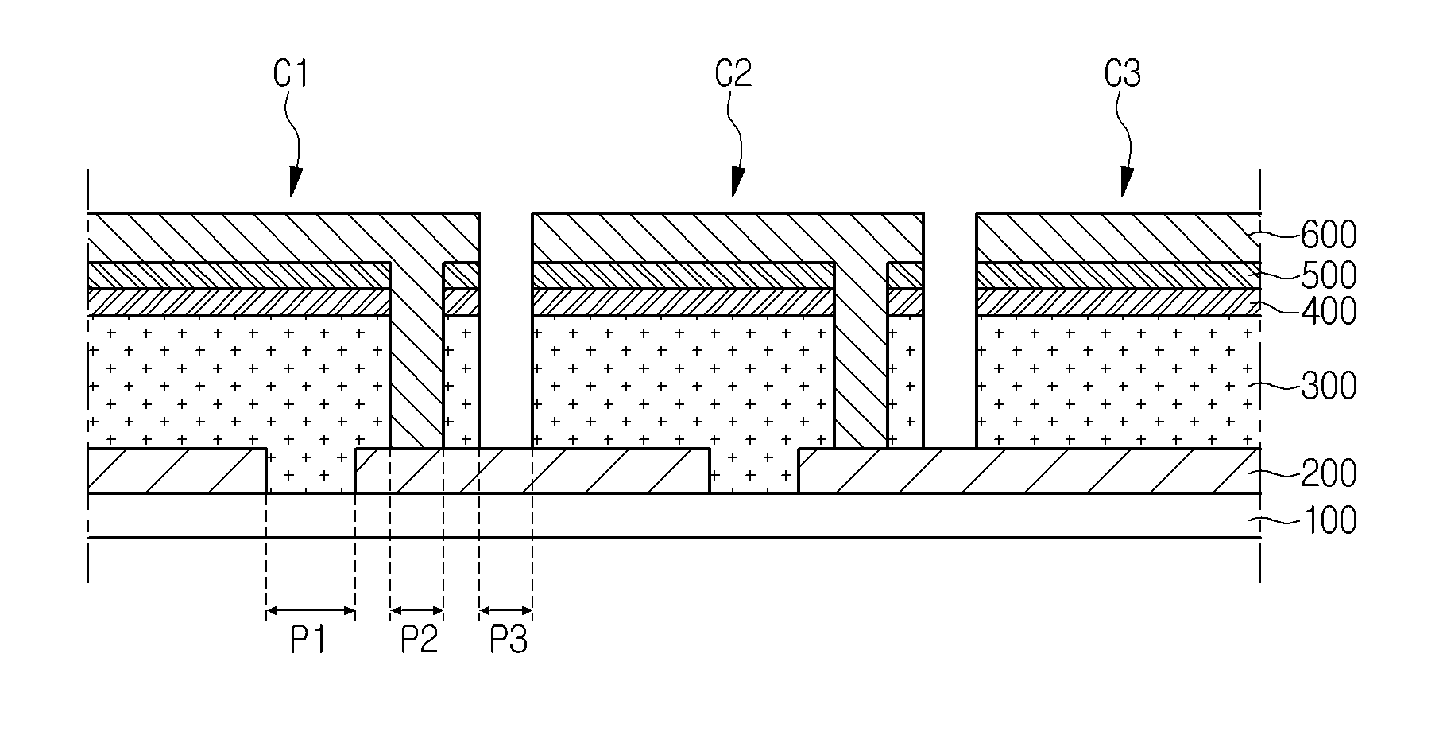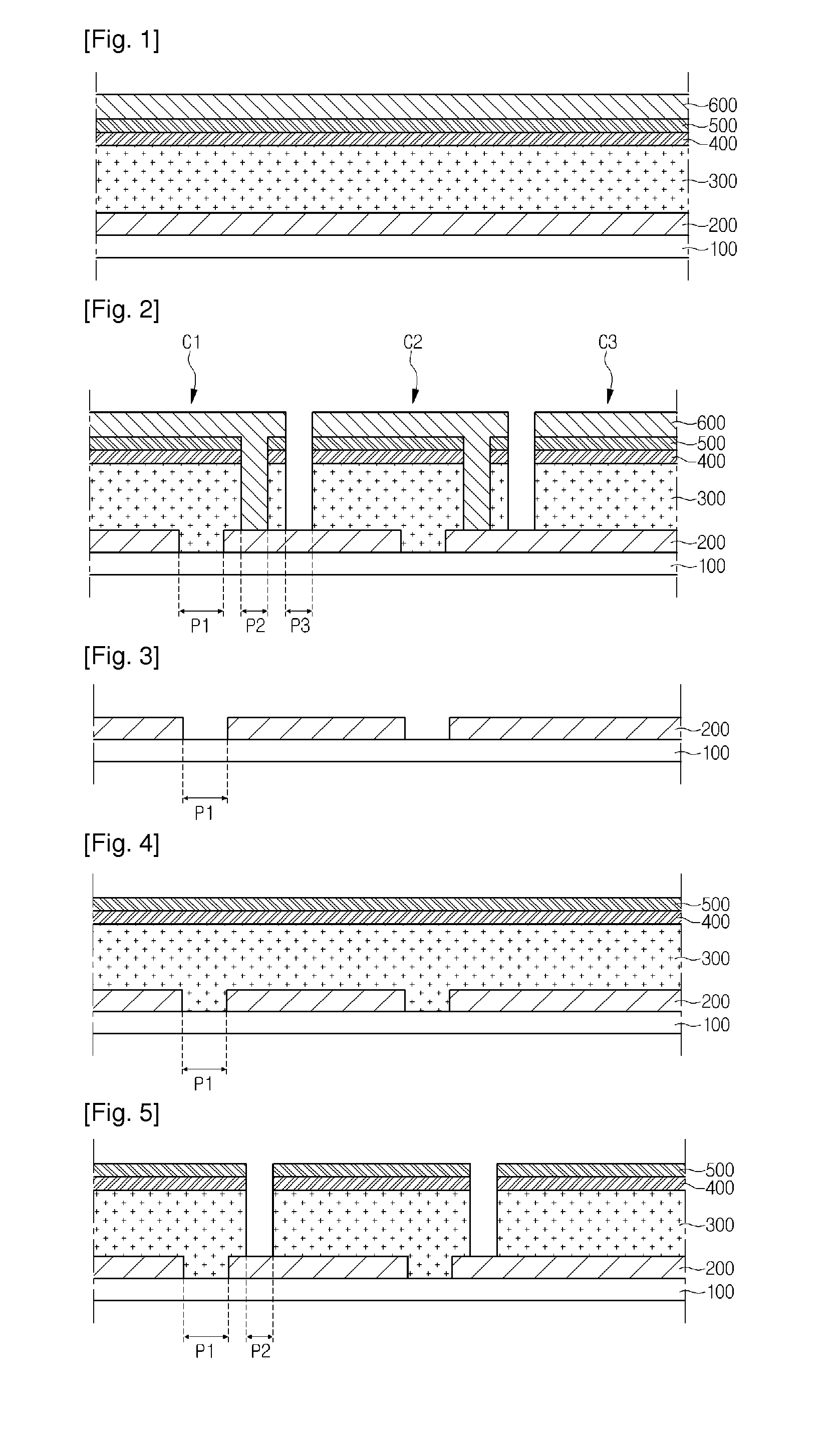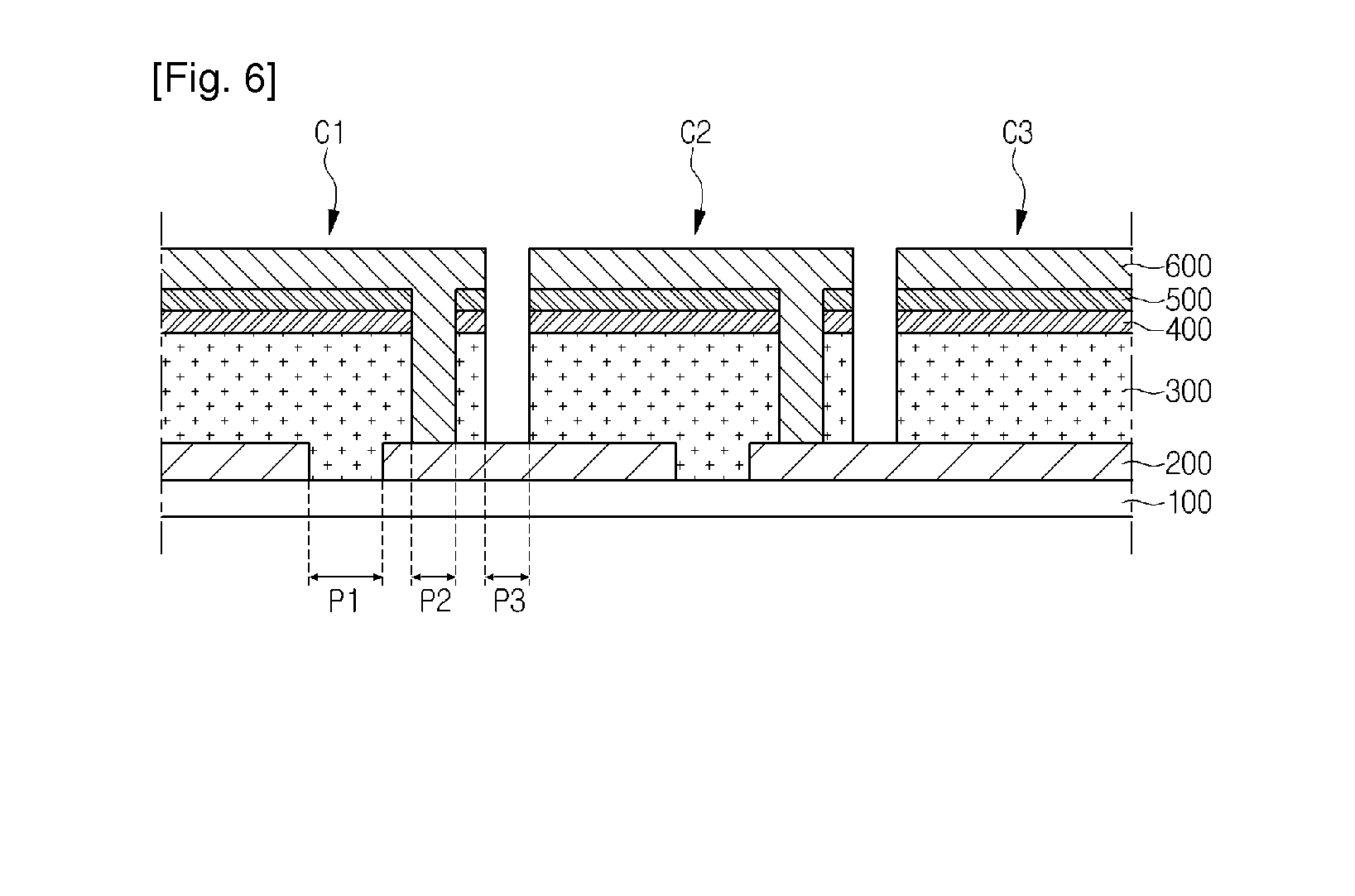Solar cell module and method of fabricating the same
a solar cell and module technology, applied in the field of solar cell modules, can solve the problems of difficult control of mocvd deposition uniformity and toxic cadmium (cd) toxicity, and achieve the effects of reducing damage and pin holes, improving photoelectric conversion efficiency, and increasing open-circuit voltage vo
- Summary
- Abstract
- Description
- Claims
- Application Information
AI Technical Summary
Benefits of technology
Problems solved by technology
Method used
Image
Examples
first embodiment
[0018]FIG. 1 is a sectional view showing a solar cell module according to the
[0019]Referring to FIG. 1, a solar cell according to the first embodiment includes a support substrate 100, a back electrode layer 200, a light absorbing layer 300, a first buffer layer 400, a second buffer layer 500, and a front electrode layer 600.
[0020]The support substrate 100 has a plate shape and supports the back electrode layer 200, the light absorbing layer 300, the first buffer layer 400, the second buffer layer 500, and the front electrode layer 600.
[0021]The support substrate 100 may be an insulator. For example, the support substrate 100 may be a glass substrate, a plastic substrate or a metal substrate. In detail, the support substrate 100 may be a soda lime glass substrate. The support substrate 100 may be transparent. The support substrate 100 may be rigid or flexible.
[0022]The back electrode layer 200 is a conductive layer. The back electrode layer 200 may include at least one of molybdenum...
second embodiment
[0037]FIG. 2 is a sectional view showing a solar cell module and FIGS. 3 to 6 are sectional views showing a method of fabricating a solar cell module according to the embodiment.
[0038]Referring to FIG. 2, the solar cell module according to the second embodiment incudes a front electrode layer 200 disposed on a support substrate 100 and formed with a first through hole P1 for exposing a portion of the support substrate 100; a light absorbing layer 300 formed on the first through hole P1 and the back electrode layer 200; a first buffer layer 400 formed on the light absorbing layer 300 and expressed as chemical formula 1; a second through hole P2 formed through the light absorbing layer 300 and the first buffer layer 400 to expose a portion of the back electrode layer 200; a second buffer layer 500 formed on the first buffer layer 400 and expressed as chemical formula 2; and a front electrode layer 600 formed on the second buffer layer 500 and gap-filled in the second through hole P2....
PUM
 Login to View More
Login to View More Abstract
Description
Claims
Application Information
 Login to View More
Login to View More - R&D
- Intellectual Property
- Life Sciences
- Materials
- Tech Scout
- Unparalleled Data Quality
- Higher Quality Content
- 60% Fewer Hallucinations
Browse by: Latest US Patents, China's latest patents, Technical Efficacy Thesaurus, Application Domain, Technology Topic, Popular Technical Reports.
© 2025 PatSnap. All rights reserved.Legal|Privacy policy|Modern Slavery Act Transparency Statement|Sitemap|About US| Contact US: help@patsnap.com



